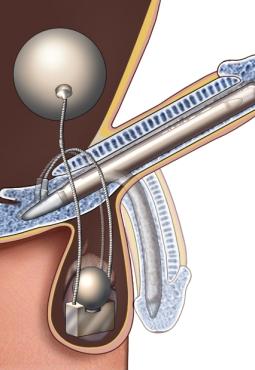Peyronie's Disease Treatments
Treatment options for Peyronie’s disease
There are phases to this disease that must be taken into consideration when deciding on the best treatment option.
During the acute phase when the disease is first noticed, there may be excessive pain and the curving of the penis may worsen. The acute phase may last up to 12 months.
If there are no changes to the curve and it is no longer painful, this is the stable phase.
The most important things to consider when treating Peyronie’s Disease are: how severe the curvature is, if the curvature is stable and if the patient is able to get strong erections despite the disease.
During the acute phase:
Medications and injections: Experts disagree on the ideal treatment during the active phase of the disease. There are many oral, topical and injection therapies that have been tested; though none of these have been widely accepted. This indicates that there are probably no good options for treatment in the active phase, and many of the injections have not held up in sound clinical trials.
Vacuum erection device and traction therapy: Patients are encouraged to consider these options, as both devices have been shown to have similar effectiveness in studies. There has also been data to suggest that if these devices are used postoperatively, there are improved outcomes.
During the stable phase:
Xiaflex: Patients using Xiaflex can expect to see a 30 percent improvement in the degree of curvature. Xiaflex is an enzyme that targets a certain part of the scar tissue found in Peyronie’s disease and breaks it down The injection with Xiaflex is done over four cycles, each cycle involving an injection of Xiaflex into the plaque, another injection after one to three days, followed by in-office penile modeling one to three days after that. The patient is then asked to do this penile modeling at home for six weeks before returning to the office for the next treatment cycle.
For the most part, Xiaflex is a well-tolerated medication. Some pain and soreness is possible at the injection site and there can be some buildup of blood under the skin (hematoma). In rare cases, the erect penis can crack and cause significant bleeding (penile fracture). To avoid this, patients are instructed to refrain from intercourse for two weeks after the injection.
Plication: The goal of a plication is to “pull” the penis into a straight line. If the scar is on the top of the penis, the plication is done at the bottom of the penis to pull it into a straight position while the scar itself is left in place. This is a good option when the curve is less than 60 degrees and there is no hourglass deformity or instability of the erection. Plication can result in loss of penile length. The scar has already caused the penis to lose length so when the penis is straightened, the length lost is more apparent. For each 30 degrees of curvature, you can anticipate one centimeter of length loss. Other side effects may include penile pain, edema and infections.
The advantage of this approach is that there is really no impact on erectile function. In addition, most cases of plication can be performed through small incisions.
Plaque incision/excision and grafting: In this type of repair, the plaque is either cut into or removed entirely, then replaced with a patch. The patch can be composed of a vein graft or cadaveric pericardium (tutoplast).
The graft technique is best for curves over 60 degrees, in those with an hourglass deformity or patients experiencing any degree of penile instability with erection.
In this approach, there is restoration of any penile length that was lost, but it is not a good option for men with erectile dysfunction (ED), as it can worsen their condition.
All penile surgeries run the risk of pain, bleeding, infection and hematoma. With plaque incision/excision and grafting, there is a 20 percent chance that erectile function will worsen after the operation. Therefore, it is important to know how strong the patient’s erections were before the operation. This type of treatment should be avoided if there are any issues achieving an erection.
If the plaque is on top of the penis and the curve is upward, then the nerves that control the sensation at the top of the penis have to be delicately peeled off the tunica to expose the plaque. When this is performed, there is a chance of injuring the nerves, causing numbness to the head of the penis. It is not uncommon for there to be numbness immediately after surgery, but this should improve in the first few months post-op.

Penile Implant: In cases of Peyronie’s disease and significant ED, the best treatment is a penile implant. During the operation, there are several techniques that may be used to straighten the penis. In addition, the penis will straighten itself over time with a penile implant in place.
Side effects of penile implant include infection, device failure, device erosion, penile pain and bleeding.